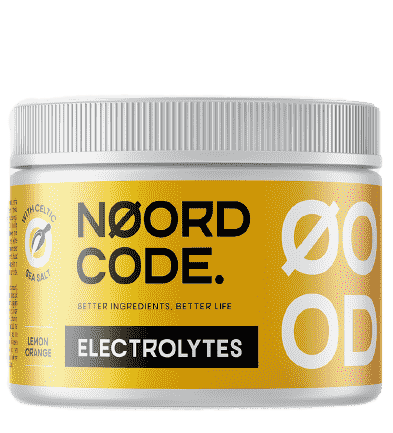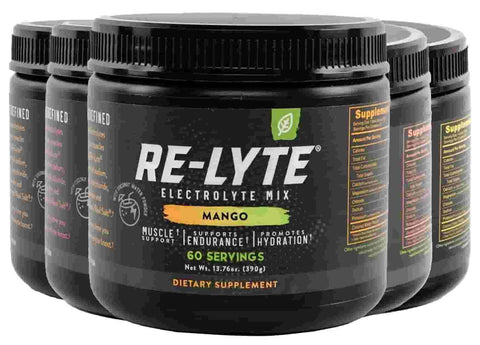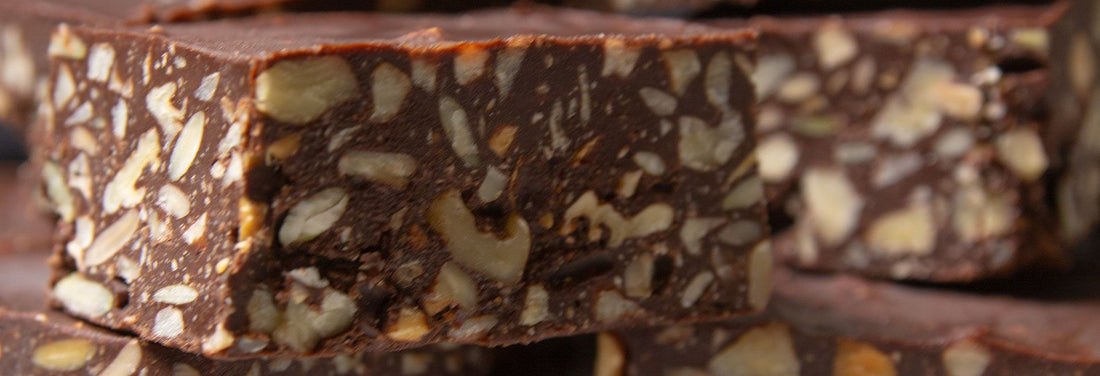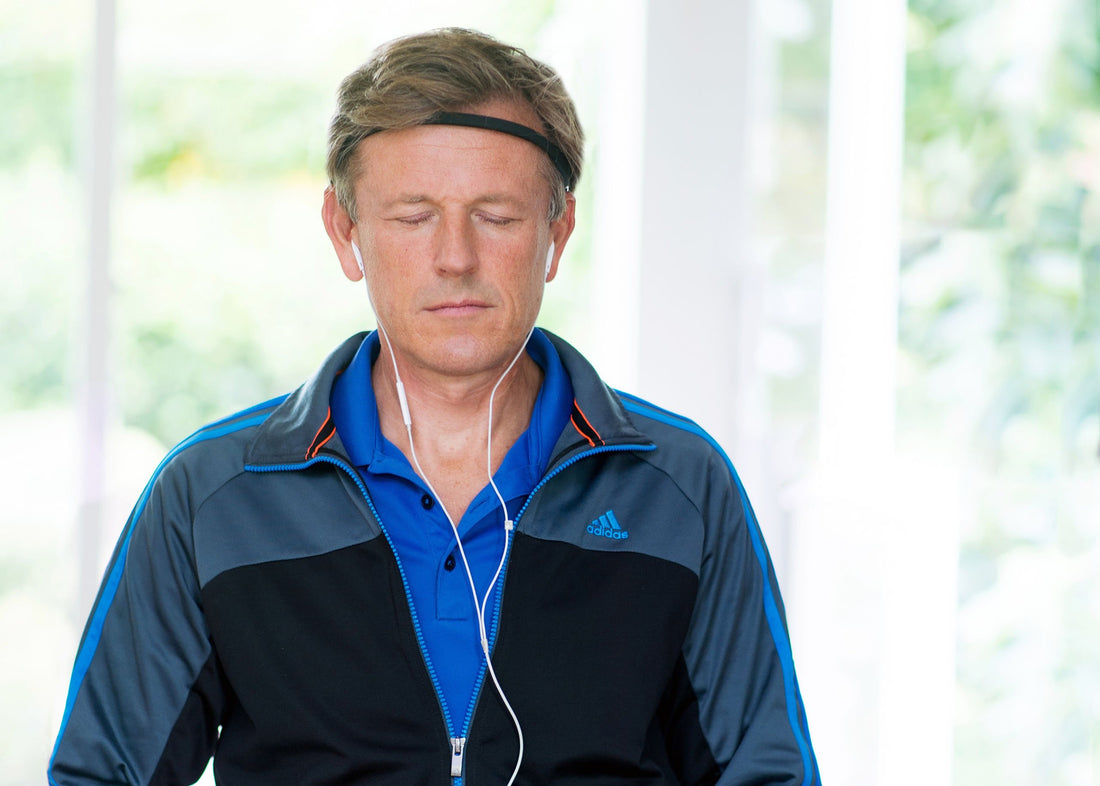Table of contents
- What are electrolytes?
- Supplementing with electrolytes
- The problem with energy drinks
- Electrolyte Supplements
- My Tip
What are Electrolytes?
Electrolytes are essential minerals found in your blood, sweat and urine. When dissolved in liquid, these minerals acquire a positive or negative electrical charge. Hence the name electrolytes. They are used in numerous processes in the body.
These electrolytes are important in the body:
- Sodium (Na)
- Calcium (Ca)
- Potassium (K)
- Chloride (Cl)
- Phosphate (P)
- Magnesium (Mg)
- Bicarbonate
Sodium and chloride
In nature, sodium and chloride occur mainly as a combination: NaCl, or salt. Sodium regulates fluid balance outside your cells. Examples are your blood pressure and blood flow.
It is difficult to get enough salt from your diet if you only eat unprocessed products. For example, one piece of meat contains only 100 mg of salt. However, a healthy person needs 5 g of salt per day. That is about 2.5 teaspoons. If you get enough sodium, you also get enough chloride.
There are four reasons why you may be deficient in salt:
- Food pattern with only natural, unprocessed ingredients. Salt is added to all processed foods. Processed foods account for 70% of your salt intake. So, if you prepare everything yourself, your salt intake will be much lower.
- A low carb/ketogenic diet. This diet lowers the insulin level. As a result, your kidneys excrete more salt, potassium and water. Electrolyte excretion is also the main cause of Keto Flu. Keto Flu can occur when you switch from a high carb to a low carb diet. Symptoms include headaches, muscle cramps, diarrhea and feeling weak (source).
- Sweating. When you exercise or go to the sauna, you lose salts by sweating.
- Fasting. Water fasting has become very popular lately. Many people fast for one or more days. It goes without saying that you do not get any salts, which results in a weak and listless feeling during fasting.
Potassium
Potassium and sodium work together to make your nerve cells send messages, such as the contraction of your muscles. Potassium also regulates moisture outside the cells (as does sodium). A healthy person needs about 2,000 mg per day (reference intake). However, most people take in much less potassium.
Good sources of potassium are
- Salmon (624 mg per 170 g)
- Spinach (271 mg per 30 g)
- Banana (422 mg per banana)
- Asparagus (271 mg per 180 g)
- Cooked lentils (731 mg per 198 g)
- Avocado (690 mg per 150 g)
- Dried apricots (2 202 mg per 190 g)
- Tomatoes (292 mg per tomato)
Magnesium
Magnesium is also called the "master mineral". It supports the functioning of about 600 enzymes. Magnesium is important for regulating calcium, muscle contraction and the energy system.
Good sources of magnesium are:
- Spinach (157 mg per 30 g)
- Pumpkin seeds (190 mg per 119 g)
- Sunflower seeds (114 mg per 133 g)
- Black beans (120 mg per 180 g)
Nuts and seeds are also a good source of magnesium. However, they also contain phytic acid that limits the absorption of magnesium. A healthy person needs about 375 mg of magnesium a day.
Calcium
Calcium is mainly used for making bones. 99% of the calcium in your body is in your skeleton. The level of calcium is regulated by two hormones, calcitonin and parathyroid hormone. When the calcium level is too high, calcitonin prevents your bones from releasing calcium to your blood. When the calcium level is too low, the parathyroid hormone withdraws calcium from your bones. A healthy person needs an average of 800 mg of calcium per day.
Good sources of calcium are:
- Yoghurt (296 mg per 245 g)
- Kale (94 mg per 22 g)
- Sardines with bones (347 mg per 90 g)
- Broccoli (62 mg per 90 g)
- Cheese (204 mg per 30 g)
- Milk (138 mg per 114 g)
Phosphorus
Phosphorus is involved in many processes in your body. It is part of DNA, cells, bones and energy production. There is plenty of phosphorus in food and a deficiency is rare. So it is not necessary to take extra supplements.
It is mainly present in protein-rich foods such as meat, fish, poultry, eggs and dairy products. A daily intake of 700 mg (reference intake) is a good guideline for a healthy person.
Sources of phosphorus are:
- Cod (391 mg per 114g)
- Sardines (445 mg per 90g)
- Lentils (356 mg per 198g)
- Chicken (259 mg per 114g)
Supplementing with Electrolytes
You can get most of your electrolytes from food. However, it may be helpful to take extra electrolytes in the following situations:
- When you eat exclusively unprocessed foods.
- When you're on a low-carb and ketogenic diet.
- When you do (endurance) sports with a lot of sweating.
- When you suffer from diarrhoea.
- when you eat little fruit or vegetables.
- When you are fasting (water).
In these situations it makes sense to take extra salt (sodium and chloride), magnesium and potassium. It is not necessary to take extra calcium and phosphorus because in principle there is enough in your diet.
The problem with energy drinks
Energy drinks (sports drinks) are very popular. Many energy drinks contain both glucose and electrolytes. Glucose can help with the absorption of electrolytes but it is not necessary. In addition to glucose, butyrate, amino acids, beta-hydroxy butyrate (BHB) and many other molecules help transport salt to your cells.
When you're on a low-carb or ketogenic diet, you don't want to take in too much sugar. This is difficult when you want to replenish electrolytes with an energy drink. It is better to take electrolytes and glucose separately (if necessary) so you can regulate the dosage of both better.
Ready-made energy drinks often contain many additional substances such as stabilisers and artificial sweeteners and colourings.
Make your own electrolyte drink
It is better to make your own drink with salt (sodium and chloride), magnesium and potassium. With an electrolyte powder supplement, this is very easy.
Electrolytes supplements
You can choose between powder and capsules when you want to supplement electrolytes. Electrolyte powders are available in a portion or jar. The portion pack and capsules are convenient for travelling.
We have made a selection of high quality electrolyte supplements:
NoordCode Electrolytes: comes in a jar
Redmond: in single-serve packets or in a jar
NoordCode Electrolytes

Optimal ratio of electrolytes
The composition of NoordCode Electrolytes is:
- 1000 mg sodium
- 400 mg potassium (20% RI)
- 76 mg magnesium (20% RI)
The sodium:potassium ratio is close to the optimal 3:2 ratio used by the body. One serving of Electrolytes provides 5 parts sodium and 2 parts potassium. NoordCode assumes a diet of fresh produce provides a large proportion of your potassium. This still brings your total to the optimal 3:2 ratio.
The amount of magnesium is also chosen to supplement your diet. Fresh plant products provide the most magnesium, and Electrolytes provides a nice addition to that.
Deliciously fresh flavors
NoordCode Electrolytes is available in the flavor Lemon Orange. The flavor comes from natural flavors and is sweetened with stevia.
Other fresh flavors have been announced.
Sugar Free
NoordCode Electrolytes are sugar-free. This makes them widely applicable and suitable for any diet, including keto and low-carb. The minimal amount of calories are negligible, for when you use the electrolyte mix during fasting.
Made in Europe
Until now, the best electrolyte mixes came from the United States. That adds unnecessary costs.
NoordCode provides sugar-free, ready-to-use electrolyte mix that anyone can use. All ingredients come from Europe, which does not detract from quality and makes the price more attractive.
Redmond

Redmond Real Salt: pure ancient sea salt
Redmond is an American company and the proud owner of a ancient sea salt mine in Utah, USA. Ancient sea salt comes from salt deposition in places where there was a sea long ago. Pink Himalayan salt is an example of ancient sea salt.
Redmond supplies high-quality, carefully extracted ancient sea salt from their salt mine. They analyse the mineral composition and add nothing. In doing so, they supply Real Salt: pure ancient sea salt rich in trace minerals. This is an excellent replacement for your regular table salt and a great salt to add electrolytes to your water.

Redmond Re-Lyte Electrolyte Mix
Redmond also has a ready-to-use electrolyte mix. The electrolytes sodium and chloride naturally come from Real Salt. In addition, Redmond also adds magnesium and potassium. Per serving, Re-Lyte (for most flavours) provides 810 mg of sodium, 400 mg of potassium, 60 mg of calcium and 50 mg of magnesium.
Re-Lyte Electrolyte Mix is available in jars or stick packs and with different flavours. All mixes are sugar-free and flavoured with natural flavours and stevia.
My tip
I always mix the electrolytes with water. For me, this provides a nice change of flavour with my total water intake during the day. I have found that for my taste there is an optimal water/electrolytes ratio: 1 sachet or 1 scoop of electrolytes to 1 litre of water. Find out for yourself what's best for you!










